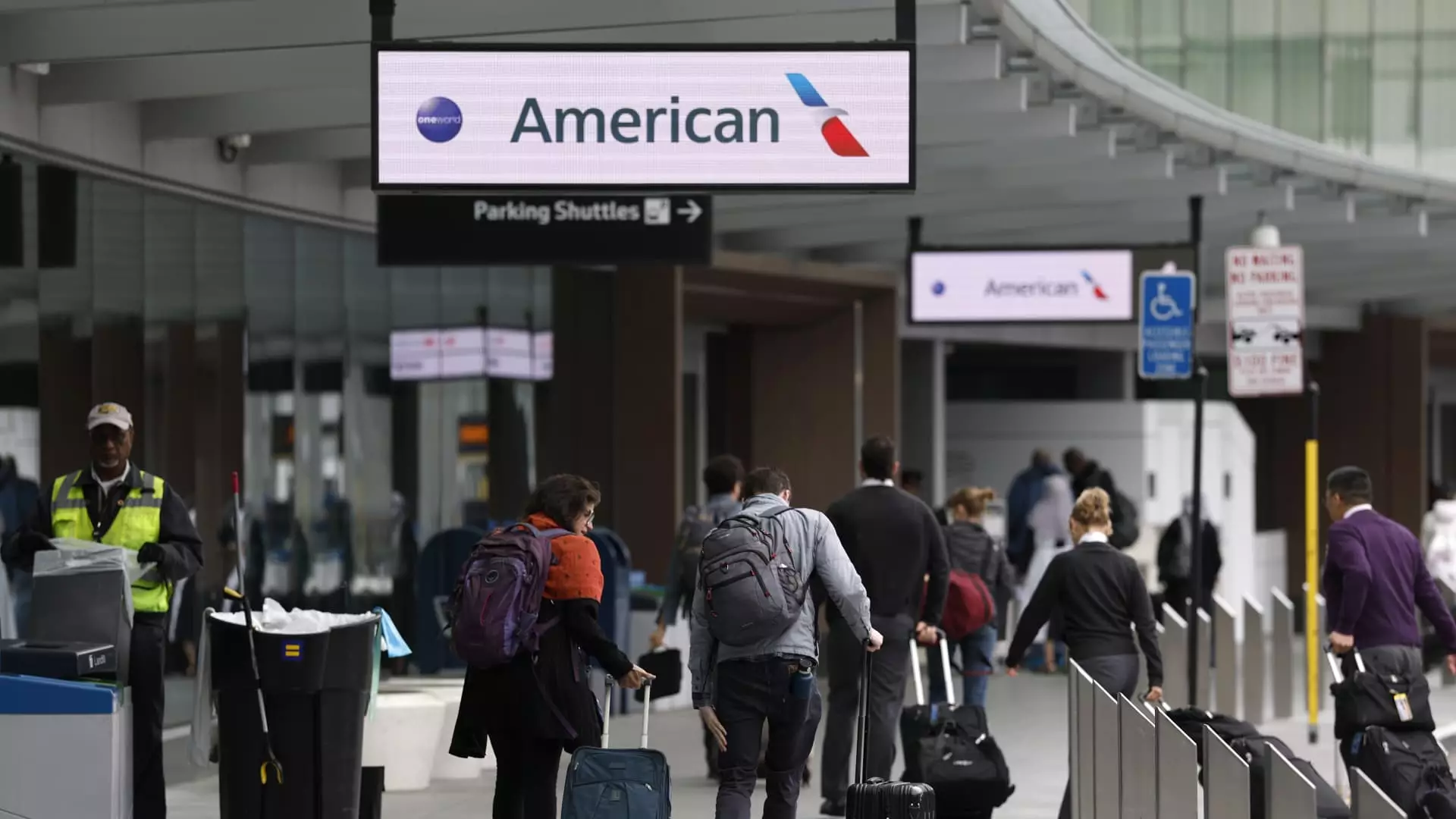As we navigate the tumultuous currents of 2025, the airline industry is sounding alarms that suggest a possible downturn in passenger demand, particularly for domestic travel. Recent statements from airline executives indicate that the optimism previously harbored at the start of the year has rapidly dimmed, giving way to anxiety about economic uncertainties. The root cause? Nobody seems to be able to pinpoint it definitively; it’s a confluence of factors that evoke a sense of foreboding. The likes of President Trump’s erratic tariff policies certainly don’t help, but at the crux of the issue is a deep-seated consumer apprehension that clouds vacation planning — a behavior integral to the travel industry’s lifeblood.
Robert Isom, the CEO of American Airlines, articulated a sentiment that resonates widely: people are increasingly hesitant to part with their hard-earned money when the ground beneath their feet feels uncertain. This hesitation, though intangible, significantly impacts purchasing decisions, particularly in the leisure sector. Airlines, particularly those accustomed to catering to a buoyant traveler base, now find themselves grappling with excess capacity — an ominous sign in an industry known for its razor-thin margins.
Capacity Cuts and Ticket Price Dips
In an almost prophetic reaction to dwindling demand forecasts, major airlines such as Delta, Southwest, United, and Alaska Air have announced an intentional pullback in their capacity growth plans. It’s a move of desperation, born from the reality that if travelers won’t fill the available seats, the airlines must act or risk annihilating their bottom lines. Delta, for example, has removed its optimistic financial outlook for 2025 altogether, raising eyebrows and concerns in equal measure. The forward-thinking hope for a robust summer travel season is being dampened by the weight of an increasingly pessimistic economic landscape.
The stark reality manifests in plummeting airfares; March saw a drop of 5.3% from the previous year, a harbinger of tough conversations ahead for pricing strategies within the industry. Although airlines typically rely on seasonal highs, such as during Easter — a peak travel period — there is no denying the choppy waters they now face. Even with projections of a strong demand for corporate travel at the beginning of the year, the growth has flatlined rapidly, reflecting the overall economic hesitation that’s become commonplace.
Challenges in Corporate Travel
The business segment, historically less sensitive to pricing pressure, has also begun showing signs that the economic malaise is affecting even the most steadfast travelers. Conor Cunningham, a travel and transportation analyst, remarked that when uncertainty rises, corporate travel is often the first casualty. It seems paradoxical that in times of economic flush, corporations would endorse travel costs; yet, it’s during uncertain times that enterprises draw back, leading to an unsettling reduction in last-minute bookings that airlines covet for their profit margins.
Delta’s CEO, Ed Bastian, initially reported a promising 10% year-on-year uptick in corporate travel. However, that growth has since stagnated, proving that even the silver linings can dissolve under economic clouds. Airlines are fundamentally vulnerable; when corporate clients tighten their belts, the ripple effect can lead to considerable losses, making routes less likely to be filled.
Industry Sentiment Amidst Economic Unknowns
The sentiment among airline executives appears cautiously optimistic regarding international travel, where demand appears to remain robust. Yet, there’s an inherent recognition of the vital need for economic stability to fuel domestic passenger confidence. Isom’s assertion that “certainty will restore the economy” provides a glimmer of hope, albeit framed in a context of uncertainty that many travelers currently face.
Lingering economic issues, whether they stem from international trade policies or unpredictable market dynamics, have conspired to create an atmosphere fraught with hesitation for consumers and businesses alike. The airline industry stands at a precarious crossroads, where the balance between thriving and merely surviving hinges on consumer psychology as much as it does on economic trends. It’s a stark reminder that in a post-pandemic world, where the skies had once felt open and inviting, uncertainty now looms as the greatest threat to the industry’s recovery.


Leave a Reply